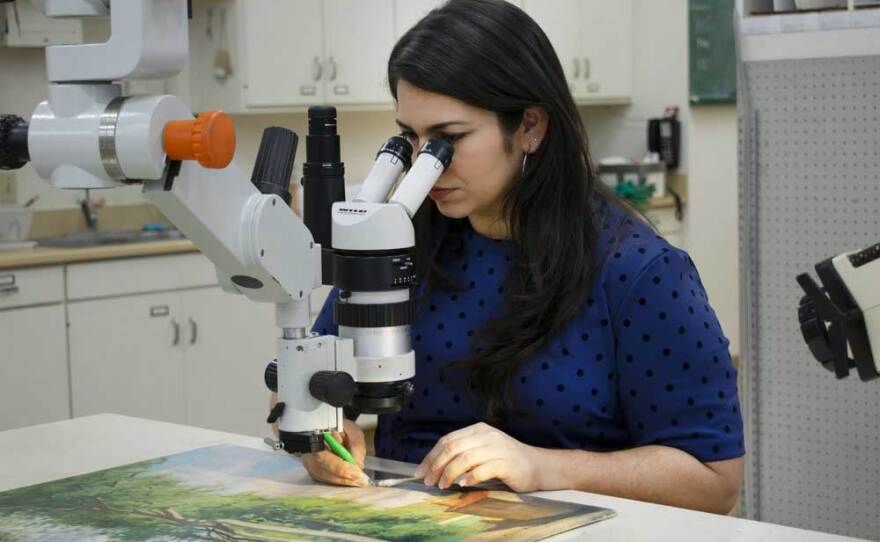The Balboa Art Conservation Center (BACC) wants to immortalize protest art.
"When the Black Lives Matter protests started and all the subsequent social movements continued, we all looked for a way that we could give back and contribute. We wanted to do it in a way that was meaningful and constructive beyond just a statement of solidarity," said Bianca Garcia, assistant conservator of paintings at BACC.
The organization, which has served San Diego for nearly 45 years, just announced a new program, Preserve Community Art, which aims to shift how the public and arts insiders decide what is art, as well as what deserves to be elevated and displayed. Through a series of projects, the group will seek art from the community to preserve, document and potentially archive.
The first project focuses on the protest and social justice art of the current moment.
RELATED: Artists Paint Shattered La Mesa Storefronts: ‘This Isn’t About Property Loss’
Pairing up with National City-based youth community arts organization A Reason to Survive (ARTS), BACC will look for works of protest art, however ephemeral, and try to find ways to preserve the pieces.
For the students involved with ARTS, particularly the college-level interns, this project will expose them and their families to a broader range of careers in the art and culture sphere. The project also upturns long-held ideas of who determines what is worthy of being in museums, or which voices matter in art. For BACC, the youth involvement brings authenticity and access.
BACC is undergoing a realignment: who they serve, what they are preserving, and what the context is in their work. "For us as an institution, it's an opportunity to be more active members of the community," said T. Hampton Dohrman, BACC's advisor.

Garcia said that they are ready to receive and consider any types of art, and their process will vary based on each piece. Is it portable? Does the artist want it preserved? What are the materials used?
"Do you want to show the history of the object, or do you want to show the wear and tear?" Garcia said. "These objects have been through a lot. If you’re looking at a sign, has it been folded, has it been tied to a car, has it been tear gassed? What part of it do you want to preserve, the physical object or the history of it?"
Garcia said that each of those questions — and countless more — dictate the methods the preservationists use on each piece. She also said that certain things can be observed directly from the art (acrylic spray paint has a different spray pattern than other types, for example), but mostly they'll look for collaboration with the artists and communities to learn the histories and intricacies of each work.
Ultimately, she said, this project will also tackle questions of ownership. "Historically, ownership has been a problematic thing for museums and collecting institutions," said Garcia. The artist, and the community that the art belongs to or dwells with will be the priority, she said.
Items such as protest signs, mural-adorned plywood storefronts, graffiti, protest flyers, zines and more are some examples of the types of work BACC and ARTS imagine for the project. But the digital space — like Instagram stories used as organizing methods, digital photography, Snapchat and more — will play a role too. While BACC doesn't specialize in digital archiving, that is something they can collaborate on.

Additionally, James Halliday, ARTS executive director, said that preserving the performance and process element of protests is also a critical component to elevating community social justice art. "Maps and routes for some of the caravan protests, selection of sites, the coordination efforts ... There’s a choreography to that," Halliday said.
Historically, protest and community art has often been preserved, but often without a greater social intent. Many of the relics of the suffrage movement in the early twentieth century were preserved because somebody saw them as important, Garcia said, but whether it was a recognition that it could be historically valuable or just something to save for grandchildren isn't always clear. "So much of it is preserved unintentionally, whether it was in someone’s basement or attic and put away and now we’re seeing value in it," she said.
For BACC, this program is all about the intent: to be a technical resource, to preserve work and document the current moment and to redefine what counts as art.
Learn more here. Organizations and individuals who would like to share protest art for consideration can email BACC at communityarts@bacc.org.






